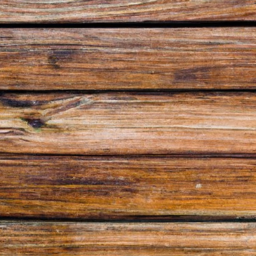
When it comes to building construction, choosing the right timber is crucial. With so many options available, it can be overwhelming to determine which timber is the most common choice. In this article, we explore the world of building timber and uncover the most prevalent type used in construction projects. Discover the characteristics, benefits, and versatility of this popular building material. Whether you’re a homeowner or a professional builder, understanding the most common building timber will help you make informed decisions for your next project.
Characteristics of Building Timber
When it comes to choosing the right timber for building, there are several key characteristics to consider. These characteristics not only determine the quality and performance of the timber, but also its suitability for different applications. Here are some important characteristics to keep in mind:
Strength and Durability
Strength and durability are essential factors to consider when selecting building timber. The timber should be able to withstand the weight and stress placed on it without bending or breaking. Additionally, it should be resistant to damage caused by factors such as weather, moisture, and pests. Choosing a timber with high strength and durability will ensure the longevity and stability of your construction project.
Ease of Workability
Another important characteristic of building timber is its ease of workability. This refers to how easily the timber can be cut, shaped, and joined together. Timber that is easy to work with allows for greater flexibility in design and construction. It also reduces the time and effort required for the building process. Consider the workability of the timber when deciding on the best material for your project.
Resistance to Insects and Decay
Insects and decay pose significant threats to the structural integrity of timber. Therefore, it is important to choose a building timber that is resistant to these issues. Some types of timber naturally possess insect-repellent properties, while others can be treated to enhance their resistance. Decay resistance is also an essential characteristic to consider, as timber that is susceptible to decay will deteriorate over time. Ensure that the timber you choose has adequate resistance to insects and decay to maintain the longevity of your construction.
Availability and Affordability
Availability and affordability are practical considerations when selecting building timber. It is important to choose a timber that is readily available in your area to avoid delays and additional costs associated with sourcing materials. Additionally, consider the affordability of the timber in relation to your budget. Some types of timber may be more expensive than others due to factors such as scarcity or high demand. It is important to strike a balance between the availability and affordability of the timber you choose.
Softwood Building Timbers
Softwood building timbers are widely used in construction for various purposes. These timbers are known for their strength, durability, and affordability. Here are some common types of softwood building timbers:
Pine
Pine is one of the most popular softwoods used in construction. It is readily available and affordable, making it a preferred choice for many builders. Pine is known for its light color and straight grain, which makes it versatile and easy to work with. It is commonly used for framing, flooring, and interior finishes.
Spruce
Spruce is another commonly used softwood in construction. It has a straight grain and a light color, similar to pine. Spruce is known for its strength and durability, making it suitable for structural applications such as framing and roofing. It is also used for interior finishes and furniture.
Cedar
Cedar is a softwood known for its natural resistance to decay and insects. Its distinct aroma and reddish color make it a popular choice for both indoor and outdoor applications. Cedar is often used for cladding, siding, decking, and fencing. Its natural resistance to moisture and pests makes it an ideal choice for outdoor structures.
Fir
Fir is a softwood with a straight grain and a light color. It is known for its high strength and durability, making it suitable for structural applications. Fir is often used for framing, flooring, and interior finishes. Its affordability and availability make it a popular choice among builders.
Hardwood Building Timbers
Hardwood building timbers are known for their exceptional strength, durability, and aesthetic appeal. These timbers are denser and heavier compared to softwoods, making them suitable for a wide range of applications. Here are some common types of hardwood building timbers:
Oak
Oak is a popular hardwood used in construction for its strength and durability. It has a distinct grain pattern and a rich color that adds a touch of elegance to any construction project. Oak is commonly used for structural applications, such as beams and columns, as well as for flooring and furniture.
Mahogany
Mahogany is a highly prized hardwood known for its beautiful appearance and excellent durability. It has a reddish-brown color and a straight grain that enhances its aesthetic appeal. Mahogany is often used for high-quality furniture, cabinets, and interior finishes.
Walnut
Walnut is a dark hardwood known for its rich color and striking grain pattern. It is highly valued for its beauty and durability. Walnut is commonly used for furniture, cabinetry, and interior finishes. Its natural resistance to decay and pests also makes it suitable for outdoor applications.
Maple
Maple is a light-colored hardwood known for its strength and versatility. It has a uniform texture and a straight grain that gives it a clean and elegant appearance. Maple is often used for flooring, cabinets, and furniture. Its durability and resistance to wear make it a popular choice for high-traffic areas.
Tropical Hardwoods vs. Temperate Hardwoods
When it comes to hardwood building timbers, there are two main categories: tropical hardwoods and temperate hardwoods. Understanding the differences between these two types of hardwoods can help you make an informed decision for your construction project.
Tropical Hardwoods
Tropical hardwoods are sourced from trees that grow in tropical regions, such as Africa, South America, and Southeast Asia. These hardwoods are known for their exceptional strength and durability, making them highly suitable for heavy-duty construction projects. Some common types of tropical hardwoods include Teak, Mahogany, and Rosewood.
Tropical hardwoods are characterized by their rich color, distinct grain pattern, and resistance to decay and pests. They are often used for high-quality furniture, decking, and outdoor structures. However, the widespread demand for tropical hardwoods has led to concerns about deforestation and sustainability.
Temperate Hardwoods
Temperate hardwoods, as the name suggests, are sourced from trees that grow in temperate regions, such as North America, Europe, and parts of Asia. These hardwoods are known for their strength, durability, and aesthetic appeal. Some common types of temperate hardwoods include Oak, Walnut, and Maple.
Temperate hardwoods vary in color, grain pattern, and density, providing a wide range of options for different construction projects. They are often used for structural applications, furniture, cabinets, and flooring. Temperate hardwoods are generally more sustainable and readily available compared to tropical hardwoods.
Sustainability of Building Timbers
In recent years, sustainability has become a key concern in the construction industry. The impact of timber sourcing on the environment and ecosystem has raised awareness about the need for sustainable timber options. Here are some factors to consider when evaluating the sustainability of building timbers:
Certified Sustainable Timbers
Certified sustainable timbers are timber products sourced from responsibly managed forests. These forests are managed in a way that promotes environmental conservation and protects biodiversity. Several organizations, such as the Forest Stewardship Council (FSC) and the Programme for the Endorsement of Forest Certification (PEFC), provide certification for sustainable timber products. Choosing certified sustainable timbers helps support responsible forestry practices and promotes the long-term viability of timber resources.
Illegal Logging Concerns
Illegal logging is a significant threat to global forests and ecosystems. It not only contributes to deforestation but also undermines the economic and social well-being of communities that rely on forests for their livelihoods. When selecting building timber, it is important to ensure that the timber is legally sourced and not associated with illegal logging activities. This can be achieved by purchasing timber from reputable suppliers and requesting documentation that proves the timber’s legality.
Alternative Timber Sources
In addition to certified sustainable timbers, there are alternative timber sources that can be considered for construction projects. These include reclaimed or recycled timber, which involves using timber from old structures or furniture and repurposing it for new construction. This reduces the demand for new timber and helps minimize the environmental impact of deforestation. Another alternative is engineered wood products, such as laminated timber or cross-laminated timber, which are made from smaller pieces of timber bonded together. These products offer increased strength and stability while utilizing timber more efficiently.
Fire Resistance of Building Timbers
Fire resistance is a crucial consideration in construction, as fires can cause significant damage to buildings and pose risks to human safety. When selecting building timbers, it is important to consider their fire resistance properties. Here are some factors to keep in mind:
Fire-Retardant Treatments
Fire-retardant treatments are applied to timber to enhance its resistance to fire. These treatments involve the application of special chemicals that inhibit the spread of flames and reduce the rate of combustion. Fire-retardant treated timber is commonly used in areas where fire safety regulations are strict, such as public buildings and high-rise structures. It is important to ensure that the fire-retardant treatment used is appropriate for the intended application and meets relevant fire safety standards.
Timber Charring and Insulation
Timber has a unique charring mechanism when exposed to fire. As the outer layers of the timber char, they provide insulation to the inner layers, reducing the spread of fire. This natural charring process can enhance the fire resistance of timber. However, it is crucial to consider the size and load-bearing capacity of the timber when relying on its charring properties for fire resistance.
It is worth noting that while timber can be fire-resistant, it is not fireproof. Therefore, it is important to incorporate other fire safety measures, such as fire-rated wall systems, sprinkler systems, and smoke detectors, to ensure overall fire safety in buildings.
Building Timber Grades
Building timber grades refer to the classification system used to assess the quality and properties of timber. The grades help builders and consumers identify the appropriate timber for their specific needs. Here are two common types of building timber grades:
Structural Grades
Structural grades are used for timber that is primarily designed to provide structural support in buildings. These grades assess the strength and load-bearing capacity of the timber. Different countries may have their own grading systems, but common designations include F-grade, S-grade, and M-grade. It is important to consult local building codes and regulations to determine the required structural grade for your construction project.
Appearance Grades
Appearance grades are used for timber that will be visible in the final construction. These grades assess the aesthetic qualities and surface finish of the timber. The grades help ensure that the timber meets certain visual standards, such as minimal knots, uniform color, and smooth texture. Appearance grades are often used for timber products used in interior finishes, furniture, and decorative applications.
Use of Building Timbers in Construction
Building timbers are versatile materials that can be used in various applications in construction. Here are some common uses of building timbers:
Framing and Structural Support
Building timbers, especially softwoods and some hardwoods, are commonly used for framing and structural support in buildings. They provide the framework that supports the weight of the entire structure, ensuring stability and safety. The choice of timber for framing and structural support depends on factors such as load-bearing requirements, span lengths, and local building regulations.
Flooring
Timber flooring is a popular choice for its natural warmth, beauty, and durability. Different types of timber, such as hardwoods and softwoods, can be used for flooring depending on the desired aesthetic and performance. Timber flooring adds a touch of elegance to any space and can be refinished multiple times to maintain its appearance.
Cladding and Siding
Timber cladding and siding are used to create exterior walls that protect the building from the elements. Cladding refers to the process of applying a layer of timber to the exterior of a building, while siding refers to individual timber boards or panels used for the same purpose. Timber cladding and siding provide insulation, weather resistance, and aesthetic appeal to buildings.
Interior Finishes
Building timbers are widely used for interior finishes, such as wall paneling, ceiling treatments, and decorative elements. Timber adds warmth and character to interior spaces, creating a welcoming environment. Timber can be used in its natural form or treated with finishes, such as staining or painting, to achieve the desired look.
Alternative Building Materials
While building timbers offer numerous advantages, there are also alternative materials available for construction. These materials provide different properties and benefits that may be suitable for specific projects. Here are a few examples of alternative building materials:
Steel
Steel is a strong and durable material that is commonly used in construction. It offers high tensile strength and can withstand heavy loads, making it suitable for structural applications. Steel is often used in commercial buildings, bridges, and high-rise structures. It provides excellent fire resistance and can be recycled, making it a sustainable choice.
Concrete
Concrete is a versatile and widely used building material. It is composed of cement, aggregates, and water, which combine to form a strong and durable material. Concrete can be molded into various shapes and sizes, making it suitable for different construction applications. It is commonly used for foundations, walls, floors, and pavements. Concrete offers excellent fire resistance and thermal insulation properties.
Composites
Composite materials are a combination of different materials, such as wood fibers and resins, that are bonded together to create a strong and durable material. Composite materials offer a range of desirable properties, including high strength-to-weight ratio, resistance to rot and decay, and low maintenance requirements. They are commonly used in applications such as decking, fences, and cladding.
While alternative building materials have their advantages, it is important to consider factors such as cost, availability, and environmental impact when making a decision.
Conclusion
Choosing the right building timber is crucial for construction projects. By considering the characteristics, availability, durability, and sustainability of timber, as well as other factors such as fire resistance and alternative materials, you can make an informed decision that meets your needs and ensures the long-term success of your construction project. Whether you opt for softwood or hardwood timbers, understanding their unique properties and applications will help you create a structurally sound, aesthetically pleasing, and sustainable building.











